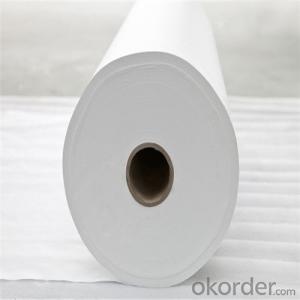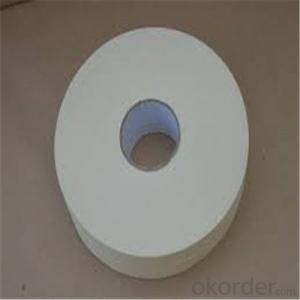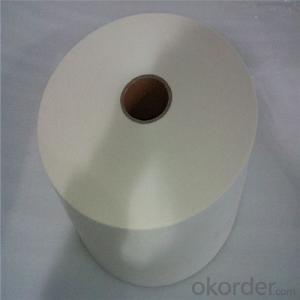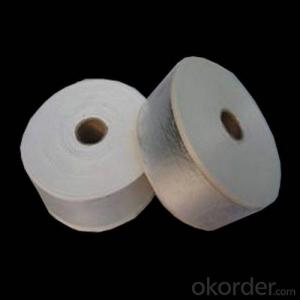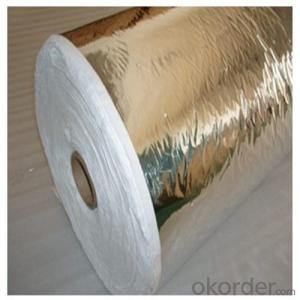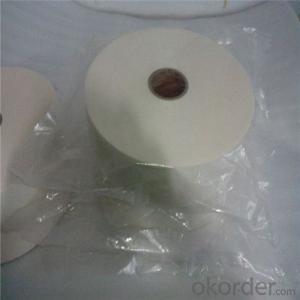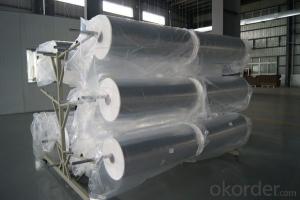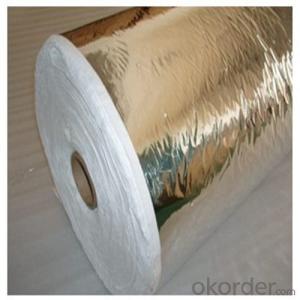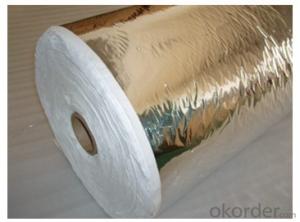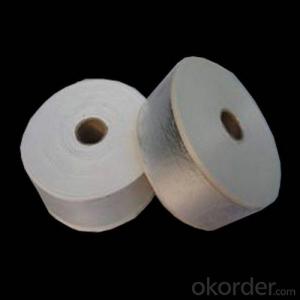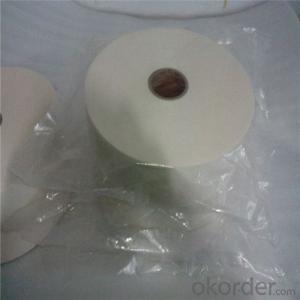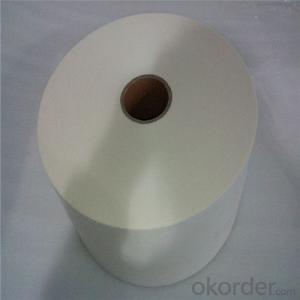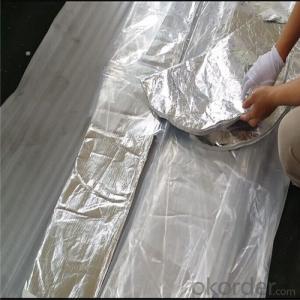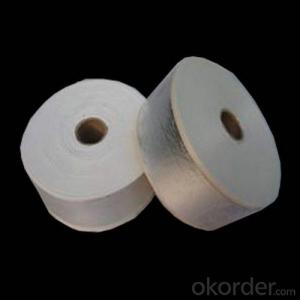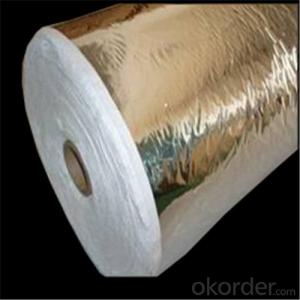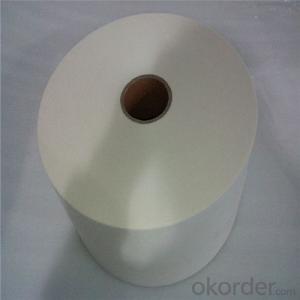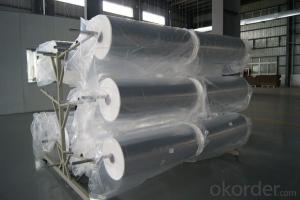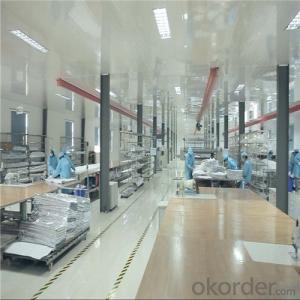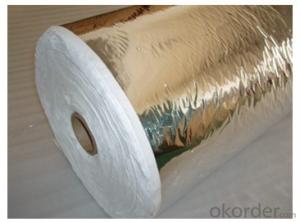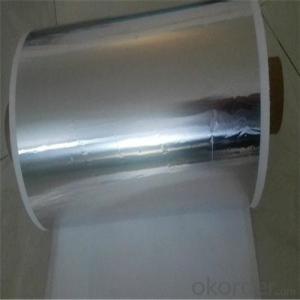Cryogenic Insulation Paper Used in Gas Industry
- Loading Port:
- Shanghai
- Payment Terms:
- TT OR LC
- Min Order Qty:
- 5 roll
- Supply Capability:
- 10000 roll/month
OKorder Service Pledge
OKorder Financial Service
You Might Also Like
General Information of Cryogenic Insulation Paper Used in Gas Industry
Cryogenic insulation paper (P paper/Z paper)/aluminum foil (or aluminized polyester film) compositions are laminated of Cryogenic insulation paper and aluminum foil (or aluminized polyester film). Cryogenic insulation paper can be wrapped to the cryogenic inner tank directly and no need to composite by user. Therefore, cryogenic insulation paper can effectively reduce the waste of material and hugely increases efficiency. The width varies from 40mm to 1800mm.
Applications of Cryogenic Insulation Paper Used in Gas Industry
Cryogenic Insulation Paper is the top selected insulation materials applicable for cryogenic liquid storage & mobile containers and pipeline systems for liquid oxygen, nitrogen, hydrogen, helium, argon, LNG and etc.
Advantages of Cryogenic Insulation Paper Used in Gas Industry
Flame-retardant
Light
High tensile strength
Low heat conductivity coefficient
Large thermal contact resistance
Low air content under the vacuum and broad operating temperature(-269℃-500℃)
Image of Cryogenic Insulation Paper Used in Gas Industry
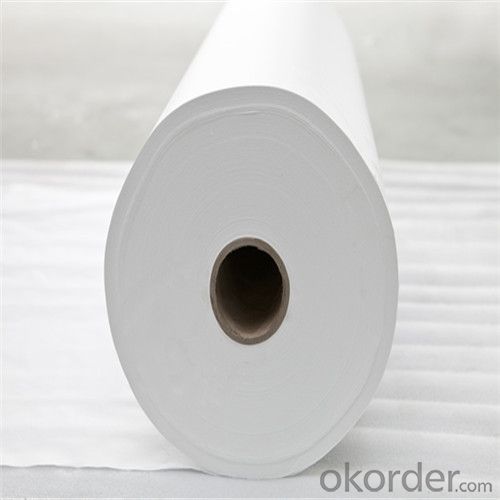
Technical Data of Cryogenic Insulation Paper Used in Gas Industry
FAQ
Q1: How do you control the products quality?
A1: With strict quality control system throughout the materials selection and production process, our refractory and ceramic fiber products quality is effectively controlled to meet customer requirements.
From the raw materials selecting, our quality control begin. The quality certificates of raw materials are required and each batch will be tested before using. During production, the quality control is conducted by workers and then each piece will be sorted and examined by quality supervisor.
Q2: What`s the lead time for my order?
A2: It depends on customers’ requirements and our production schedule. And usually we need 30-60 days for refractory bricks, 10-25 days for unshaped refractory materials and 10-20 days for ceramic fiber blankets.
Q3: Can you offer Door-to-Door delivery?
A3: Yes, but only for some countries such as U.S., UAE, Saudi Arabia, Iran, and Russia, etc.
Q4: What is the minimum quantity?
A4: There is no minimum order quantity. Depending on the item and processing, there may be a minimum production required, however we can offer a quotation based only on the quantity you need.
Q5: Can you give me a brief introduction of the application of your products?
A5: CNBM (China National Building Material) core refractory business comprises the production, sale and installation of high-grade refractory products, the development and implementation of customized system solutions as well as rendering outstanding services for the key industries in Glass, Iron& Steel, Petrochemical, Cement, Ceramic and Nonferrous Metals.
- Q:What is a cryogenic fast line
- Broadly, cryogenic means - the temperature under 100 ℃, in industry can be divided into gas liquefaction technology, chemical industry and material industry of cryogenic treatment.
- Q:Cryogenic treatment to improve what performance?
- Cryogenic treatment (cryogenic treatment) refers to the materials needed at -190 DEG C to -230 DEG C under treatment. Suitable for all metal or nonmetal material, such as alloy, carbide, plastic (nylon and Tie Fulong), aluminum, ceramics etc..
- Q:How many changes in the properties of the cryogenic metal?
- 4 milling cutter milling hole surface Phi 12, 48-2NT5 milling cutter milling end 13, 48-2NT6 high speed steel twist drill drilling A3 of 129 2967 high speed steel twist drill drilling 40Cr of 146 3588 high speed steel 8 drill wear 25cr2NiMoV 10 hole 40 hole wear9 high speed steel 10 bit hour HT20-40 1235
- Q:I would like to ask how the process of cryogenic treatment
- The air is compressed to 0.5MPa, or 22.5MPa, can reduce the water cooling, after expansion machine (piston or turbine), the temperature dropped to close to the liquid temperature to the fractionation tower after liquefaction, become rich liquid, the liquid oxygen into a fractionating tower, liquid oxygen, nitrogen is directly sent out after heat exchanger. Inlet air cooling.
- Q:What is the meaning of vacuum cooling in heat treatment
- Placed for a period of time, known as cryogenic treatment, under normal circumstances are usually treated with liquid nitrogen.
- Q:What is the meaning of deep frozen
- In general, the frozen layer of our home refrigerator can only reach -18 degrees, but also slow freezing, slow freezing will have a great impact on food nutrition and flavor.
- Q:Can the cryogenic phase control the cooling rate?
- 1, the principle of liquid nitrogen refrigeration: storage of liquid nitrogen in the container through the liquid in the sublimation of heat to take away the heat of the workpiece heat. Liquid nitrogen refrigeration can not be reused after the need to add a new liquid nitrogen, a large range of cooling rate, cooling temperature range of 0-196 degrees C.
- Q:What is the meaning of cryogenic technology in the mechanical process, what is the specific practice?
- High speed steel W18Cr4V cryogenic hardness, impact toughness and wear resistance are significantly improved with the use of its manufacturing tool life increased by 2~5 times
- Q:Ultra low pressure casting mold useful, how to arrange the process? Thank you
- While casting field production high temperature is about 660 degrees, some die casting production Aluminum Alloy temperature of 740 degrees, copper alloy die-casting production temperature even up to about one thousand degrees, the temperature and the ambient temperature, the temperature fluctuation is bigger, hot and cold alternating stress caused by the greater! That is, the stress produced in the production process is very large, even if the cryogenic treatment, the stability of the role of the size of the casting mold and plastic mold is not obvious! As for how you choose, you might as well try!
1. Manufacturer Overview |
|
|---|---|
| Location | |
| Year Established | |
| Annual Output Value | |
| Main Markets | |
| Company Certifications | |
2. Manufacturer Certificates |
|
|---|---|
| a) Certification Name | |
| Range | |
| Reference | |
| Validity Period | |
3. Manufacturer Capability |
|
|---|---|
| a)Trade Capacity | |
| Nearest Port | |
| Export Percentage | |
| No.of Employees in Trade Department | |
| Language Spoken: | |
| b)Factory Information | |
| Factory Size: | |
| No. of Production Lines | |
| Contract Manufacturing | |
| Product Price Range | |
Send your message to us
Cryogenic Insulation Paper Used in Gas Industry
- Loading Port:
- Shanghai
- Payment Terms:
- TT OR LC
- Min Order Qty:
- 5 roll
- Supply Capability:
- 10000 roll/month
OKorder Service Pledge
OKorder Financial Service
Similar products
New products
Hot products
Related keywords
